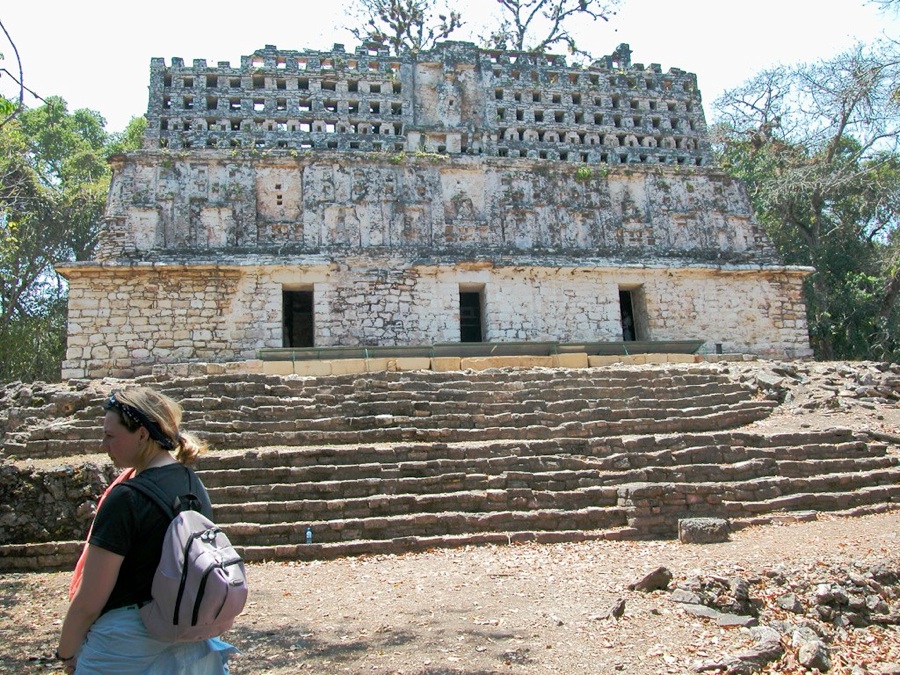After visiting Palenque, we next journeyed to Yaxchilan. Yaxchilan is out in the middle of nowhere, on the Usumacinta River. The name “Yaxchilan” means “blue-green stones” in Mayan. According to Wikipedia, the original name for Yaxchilan was probably “Pa’Chan”.
According to the 1st INAH Plaque accompanying this site, Yaxchilan developed into a powerful urban center on the Usumacinta River over a 400 year period. Based on the architecture, ceramic materials, and hieroglyphic inscriptions archaeologists believe that the Mayans occupied Yaxchilan before 250 A.D., and abandoned it around 900 A.D. Yaxchilan has more than 120 structures in the central area, distributed in 3 great complexes: the Grand Plaza, located in the lower part parallel to the river; the Grand Acropolis; and the Small Acropolis. The Mayans used terraces and platforms to skillfully adapt these structures to the contours of the low limestone hills in the south. Stairways, ramps, and terraces connect the 3 complexes.
Yaxchilan and other Mayan sites in this area share certain general characteristics, such as roof combs on the temple centers and ornamentation modeled almost entirely in stucco over the frieze on the temples’ 2nd section. They all reflect mastery of the architectural technique of covering wide spaces with roofs supported by walls. Stelae, lintels, altars, stairs, bas-relief carvings in stucco, and mural painting all distinguish Yaxchilan, and all of these characteristics are integrated into the architecture resulting in a unified whole.





